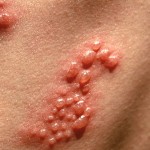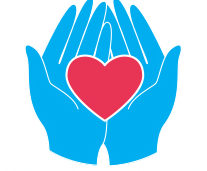
Older People urged to get a jab
Older people in the UK are being urged to get a shingles jab to help prevent the painful and sometimes fatal infection.
Public Health England is reminding eligible older people that if they were aged 70 to 78 on the 1st of September 2015 can get the injection.
Data for the September 2015-November 2015 quarter showed a 2% reduction in the number of cases of shingles in people in their 70’s compared to the same quarter in 2014.
If you know someone who is eligible please remind them that the injection is available to them.
Shared from NHS Choices.
An episode of shingles typically lasts around two to four weeks. The main symptoms are pain, followed by a rash.
Any part of your body can be affected, including your face and eyes, although the chest and abdomen (tummy) are the most common areas where shingles develops.
Early symptoms
In some cases, shingles may cause some early (prodromal) symptoms that develop a few days before the painful rash first appears. These early symptoms can include:
- a headache
- burning, tingling, numbness or itchiness of the skin in the affected area
- a feeling of being generally unwell
- a high temperature (fever)
Not everyone will experience these prodromal symptoms. A high temperature is particularly uncommon.
Pain
Eventually, most people with shingles experience a localised “band” of pain in the affected area.
The pain can be a constant, dull or burning sensation and its intensity can vary from mild to severe. You may have sharp stabbing pains from time to time, and the affected area of skin will usually be tender.
Pain is less common in young healthy people and is rare in children. It usually starts a few days before the rash appears and can remain for a few days or weeks after the rash has healed.
Rash
The shingles rash usually appears on one side of your body and develops on the area of skin related to the affected nerve.
Initially, the shingles rash appears as red blotches on your skin before developing into itchy blisters similar in appearance to chickenpox.
New blisters may appear for up to a week, but a few days after appearing they become yellowish in colour, flatten and dry out.
Scabs then form where the blisters were, which may leave some slight scarring. It usually takes two to four weeks for the rash to heal completely.
When to seek medical advice
Shingles is not usually serious, but you should see your GP as soon as possible if you recognise the symptoms. Early treatment may help reduce the severity of your symptoms and the risk of developing complications.
You should also see your GP if you are pregnant or have a weakened immune system (the body’s natural defence system) and you think you have been exposed to someone with chickenpox or shingles and haven’t had chickenpox before.
